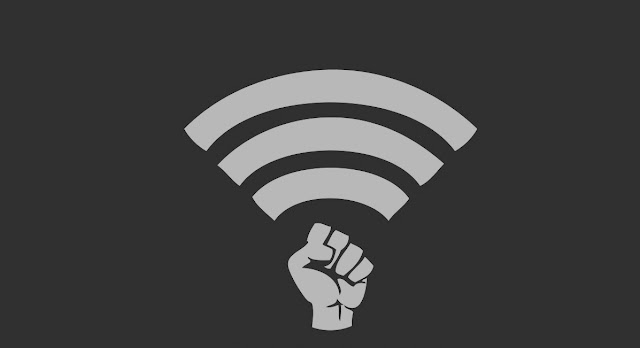 |
| Digital revolutions are on the rise in Pakistan Photo credit: Wikimedia commons |
Each era brings a novel tool through which thoughts are expressed, networks are formed and ideas disseminated and Pakistan is no exception. The insatiable desire to reach out to more and more people has led to advanced thinking in terms of how collective spaces are defined and how to interact within them. Social media, whether WhatsApp, Facebook or Twitter, has come to the forefront and transformed the digital arena in constructive ways. In Pakistan, the internet penetration rate stands at 22% as of April 2018, with 55 million 3G/4G subscribers and 35 million social media users, with political engagement and awareness campaigns now being run through such mediums. These social platforms are being used in ways that they have never been used before, with citizen journalism becoming a popular phenomenon, where the general public (as opposed to just journalists) speaks out and documents events even as they happen. What they articulate has wide-spread influence and has given a new face to civil society, expanding its powers to affect people, events and legislation.
The global civil society campaigns like #MeToo and #TimesUp have fashioned a space for women to comfortably share their experiences and allowed them to come together virtually, creating a sense of comradery with one another. It has allowed them to carve a position in society by publicly speaking about the injustices they face, and the people who perpetuate them, giving a voice to previously nameless, faceless women. For example, Meesha Shafi’s statement about her encounter with sexual harassment has made room for women in Pakistan to be empowered enough to come forward and share their experiences with sexual misconduct. These efforts are supported by organizations like UN Women, local women collectives like Girls at Dhabas, along with multiple artists and activists, building a form of virtual solidarity to support victims of such abuse, adding a new dimension to new-age feminism that transcends physical boundaries.
Local groups in Pakistan have also utilized the social media sphere to put forward the plight of women, a trend which is becoming increasingly popular in the FATA and KPK region. Tribal women’s network Qabailee Khor and its supporting NGO KHOR have utilized Twitter and Facebook to articulate problems women face and draw attention to their activities to mitigate the marginalization and alienation of women in the public sphere. This includes their support of the FATA merger with KPK and how it would benefit women. What’s interesting is that these organizations utilize photographs in most of their posts, targeting those who cannot read well, ensuring inclusivity and circulating their message further. This innovation can be credited to the youth, who are the backbone of this social revolution. They are transforming societal norms and the face of activism.
The Pashtun Tahafuz Movement (PTM), a peaceful social movement advocating for Pashtun human rights in FATA, is another example of emerging collective action. The government’s curb on mainstream news coverage of PTM has put pressure on social media to keep it afloat. In the face of the media blackout, PTM leader Manzoor Pashteen has personally visited tribal women groups to understand their problems and express his support for women’s rights in FATA. Not only having women posted about this, but PTM circulated its own statement on WhatsApp. Movement leaders Ismat Shahjahan, Ali Wazir and Mohsin Dawar said, “According to the United Nations, over the last 8 years FATA military operations and bombings have displaced 53 lakh people and out of the total number of displaced people due to 2014-15 Operation Zarb-e-Azab, 75% were women…nearly 77% of women in KPK live without basic facilities and comforts.”
One of PTM’s achievements is the restoration of cellular services in some parts of FATA. In South Waziristan communication services were suspended for more than six years, and for one year in Mohmand. Without these services, tribal agencies were deprived of mobile phone contact and access to social media altogether. Meanwhile, PTM has survived through using social media, and their pressure has enabled women in FATA to begin accessing resources such as internet and related social media.
Keeping this in mind, what can we expect next? Aurat March, a Karachi-based network of women also gained traction on social media, has already made concrete efforts to collaborate with PTM, and arranged for drone coverage of its May jalsa in Karachi, along with documenting the devastating stories of women from FATA. Thus, innovative uses of technology and social media have led to more inclusive expressions of voice, galvanizing political action in the face of obstacles in traditional media avenues.
